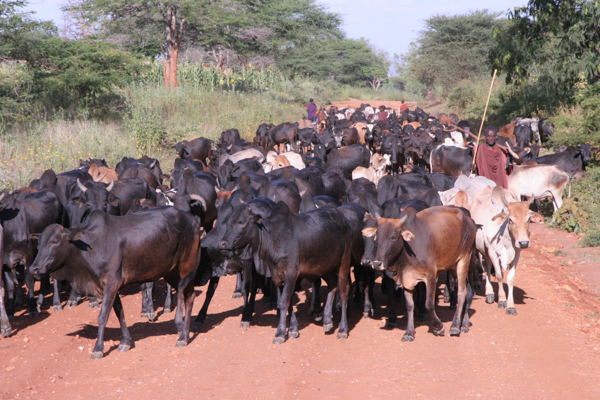
An August 2017 report by the Kenya Meteorological Department has indicated that in Northeastern, Northwestern and Southeastern parts of the country , areas where over four million pastoralists reside , will experience enhanced rainfall until December, a factor that will facilitate the growth of grass for their livestock.
“Foliage and pasture conditions in the pastoral areas of Northeastern, Northwestern and Southeastern Kenya are expected to improve significantly as a result of the expected good rainfall performance during the season,” reported the Kenya Metrological Department.
RELATED ARTICLE: Pastoralists insulate livestock with year round unique grass
“The onset of the rains is expected in the second to third week of October and the cessation during the fourth week of November to first week of December.”
During the rainy season, grass grows faster due to the presence of enough water however this can also be lead to the growth of soft grass which experts warn it should not be fed to the animals when fresh.
“When the rains come, new young grass sprouts,this is very good for the animals. Animals easily pick at the soft grass and eat it up in big quantities but farmers should take care because this grass has a lot of water and little fibre, which is not very good for the animal,” said Peter Muturu, Livestock Production Officer- Nairobi County.
RELATED ARTICLE: School rescues pastoralists’ livestock from death
“Animals need fibre for proper digestion. The water fills up the stomachs and it is virtually useless.”
Muturu advises livestock keepers to harvest or cut some of the young grass and dry it under the sun,this will turn it into good feed.
The rainy season is also the season when most livestock farmers in arid and semi-arid lands (ASALs), grow fodder crops like Cenchrus Ciliaris (African Foxtail Grass) which is the grass of choice for ASAL areas. This grass specie is highly palatable with high leaf production.
Pasture production in most pastoral areas in Kenya is based on Cenchrus ciliaris and Erasgrostis superba grass which is loved by the Maasais according to Kerio Valley Development Authority. The two are the most popular pasture species in ASALS where livestock rearing is the mainstay economic activity.
RELATED ARTICLE: Organisation connects pastoralists to cash on delivery markets
Cenchrus Ciliaris grass for instance can produce up to 200 bales of hay from one hectare of land under good agronomic practices. Upon maturity, the grass can be used to make hay, stored and fed to livestock during the dry season when there is little growth of grass.
It can be of good use during dry spells when pasture is a major challenge to livestock farmers or pastoralists in these areas.
The first rainy season of this year the country experienced below-normal rainfall that was mainly recorded during March-April-May. Most parts of the country experienced generally sunny and dry weather conditions during June-July-August according to the weather report.
















Comments powered by CComment